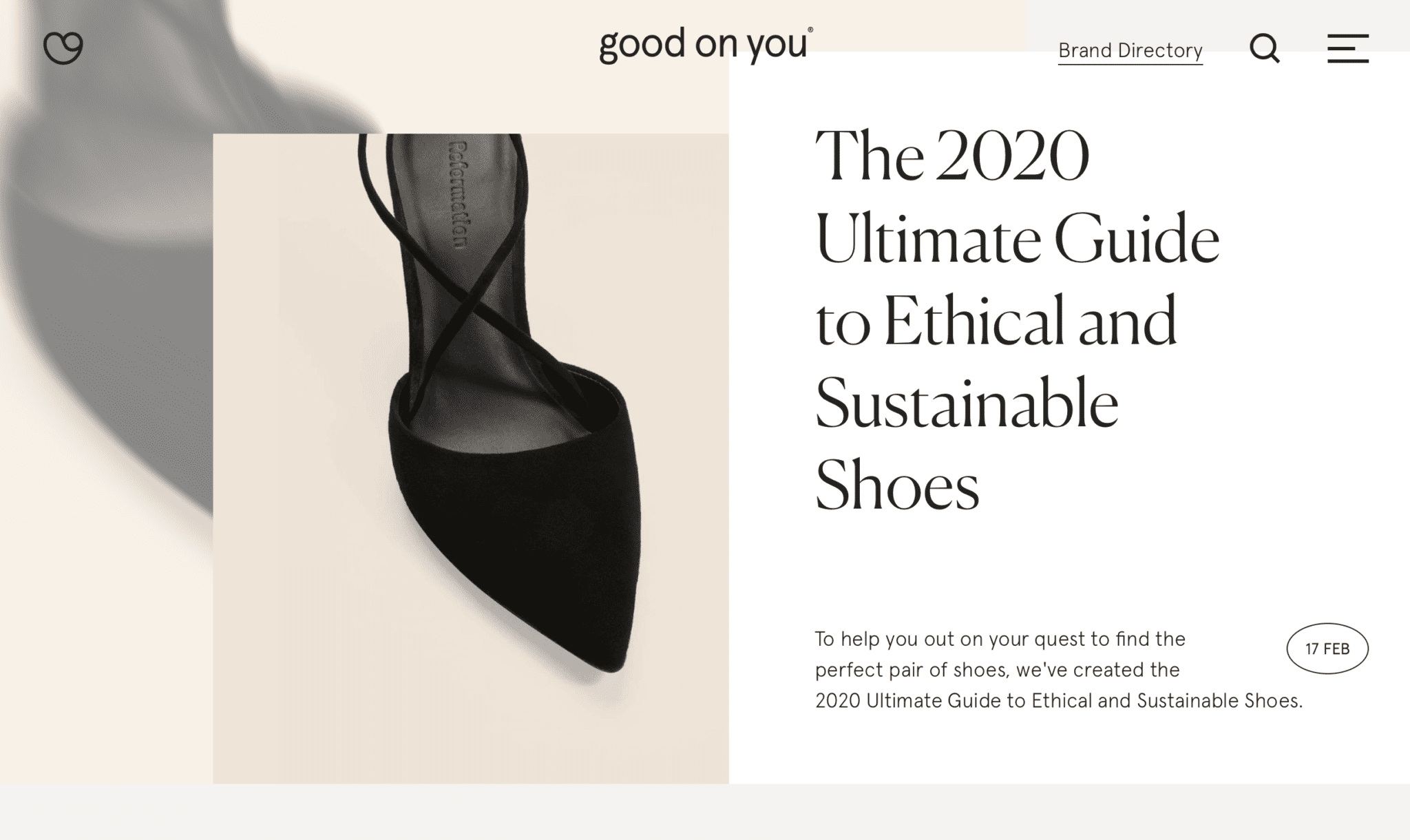by Carson Bandy
 The clothes we put on our back are profoundly personal. Almost as personal as what we choose to put into our bodies. The clothes we wear have stories, good ones, of the times we had in them or the joy they’ve brought us. But there can also be a darker story attached to them that’s not often seen. As some of you may have read in my last blog post, this year I have commited to quit fast fashion. Not only is textile production one of the most polluting industries in the world, but it also comes with a slew of human rights violations. This isn’t exactly new information but what exactly is fast fashion? Fast fashion can be defined in a few different ways. The ethical rating website Good On You defines fast fashion as “cheap, trendy clothing, that samples ideas from the catwalk or celebrity culture and turns them into garments in high street stores at breakneck speed.” Investopia describes fast fashion as “a term used by fashion retailers to describe inexpensive designs that move quickly from the catwalk to stores to meet new trends.
The clothes we put on our back are profoundly personal. Almost as personal as what we choose to put into our bodies. The clothes we wear have stories, good ones, of the times we had in them or the joy they’ve brought us. But there can also be a darker story attached to them that’s not often seen. As some of you may have read in my last blog post, this year I have commited to quit fast fashion. Not only is textile production one of the most polluting industries in the world, but it also comes with a slew of human rights violations. This isn’t exactly new information but what exactly is fast fashion? Fast fashion can be defined in a few different ways. The ethical rating website Good On You defines fast fashion as “cheap, trendy clothing, that samples ideas from the catwalk or celebrity culture and turns them into garments in high street stores at breakneck speed.” Investopia describes fast fashion as “a term used by fashion retailers to describe inexpensive designs that move quickly from the catwalk to stores to meet new trends.

 As a result of this trend, the tradition of introducing new fashion lines on a seasonal basis is being challenged. Today, it isn’t uncommon for fast-fashion retailers to introduce new products multiple times in a single week to stay on-trend.” There are hundreds of other definitions on the internet, but all of them revolve around products that are produced quickly, cheaply, and that follow trends. However, fast fashion still is not a clear line in the sand. There are a few major players in the game that can be easily identified like Inditex (Zara, Bershka, Massimo ect.), Gap inc. (Gap, Banana Republic, Old Navy, Athleta) Hennes & Mauritz (H&M, Monki, Weekday, etc.) and Fast Retailing (Uniqlo, Theory, etc.) which together make up roughly 90% of what is traditionally considered “fast fashion.” All of these brands utilize exploitative labor practices in harsh and unsafe conditions, steal designs from smaller brands, and completely disregard their environmental impact. These brands are easy to define. But how then do we categorize brands like ASOS that have eco friendly material lines, part of the better cotton coalition, and have a code of conduct for how their suppliers should be treated, but not along every phase of the supply chain? Fast fashion, like most things, exists on a spectrum.
As a result of this trend, the tradition of introducing new fashion lines on a seasonal basis is being challenged. Today, it isn’t uncommon for fast-fashion retailers to introduce new products multiple times in a single week to stay on-trend.” There are hundreds of other definitions on the internet, but all of them revolve around products that are produced quickly, cheaply, and that follow trends. However, fast fashion still is not a clear line in the sand. There are a few major players in the game that can be easily identified like Inditex (Zara, Bershka, Massimo ect.), Gap inc. (Gap, Banana Republic, Old Navy, Athleta) Hennes & Mauritz (H&M, Monki, Weekday, etc.) and Fast Retailing (Uniqlo, Theory, etc.) which together make up roughly 90% of what is traditionally considered “fast fashion.” All of these brands utilize exploitative labor practices in harsh and unsafe conditions, steal designs from smaller brands, and completely disregard their environmental impact. These brands are easy to define. But how then do we categorize brands like ASOS that have eco friendly material lines, part of the better cotton coalition, and have a code of conduct for how their suppliers should be treated, but not along every phase of the supply chain? Fast fashion, like most things, exists on a spectrum.
The allure to fast fashion is, of course, its affordability. 60 years ago, about 20% of you reading this would know somebody who makes clothes. Since the 1960s, however, the number of garment workers in the world has more than quadrupled. The difference now is that in the 1960s, almost all of the clothes that were sold in the US were also made here. Today, only about 2% of clothing sold in the United States is made here. It’s not just the number of garment workers that has increased either. In the 1960s, the average american household spent roughly 10% of their household income on clothes, which garnered them about 25 new clothing pieces a year. Fast forward 60 year and the average american household spends only 3.5% of it’s annual income on new clothes, yet add about 70 new clothing pieces to their closet. This drastic increase in workers and product and decrease in cost has drastic consequences that have been put of the backs of those who make the clothes. Over 80% of the world’s clothes are made in Bangladesh, India, China, Vietnam, Ethiopia, Indonesia, Sri Lanka and the Philippines under such poor conditions that these are largely considered to be human rights violations. The people that are affected are underpaid, under fed, and overworked. Most of these workers are women and children that are forced to work 14-16 hours a day. They are forced to work in appalling conditions as revealed in the 2013 Dhaka garment factory collapse that left over 1,000 garment workers dead and over 2,000 injured. Additionally, garment workers are some of the most underpaid workers in the world. In Bangladesh, for instance, garment workers only make around $0.20- $0.40 a day (the World Bank recognizes extreme poverty as living on less than $1.25 a day.)
Clothes are produced in these countries not only for their lax labor laws, but also because of their lax environmental laws as well. The fashion industry accounts for 10% of all GHG emissions– that’s more than international flights and maritime shipping combined. It’s also the 2nd largest consumer of freshwater worldwide after agriculture. Textile production is also responsible for a large majority of oceanic plastic. It is estimated that polyester, acrylic, and nylon derived micro plastic fibers make up over 30% of oceanic plastic. And if all of that wasn’t enough, we aren’t even keeping the clothes that cost our people and planet so much. One garbage truck full of clothes is burned or dumped in a landfill every second of every day. That adds up to about 25 billion pounds of textiles thrown away each year, about 70 pounds per person. That’s 85% of new clothes produced in a year. So not only are we buying more, cheaper, lower quality clothes, but we are throwing them away at a rate that’s 5 times higher than it was in the 1980s. This environmental issue is felt all over the world, but like a lot of environmental issues, is a first world problem. If your discarded clothes do happen to make it to the resell market, the wearable pieces are sent to the roughly 70% of the world that wears exclusively secondhand clothing.
Change for this increasingly broken model has to come from these companies exploiting workers and polluting the environment either through choice by shifting their business model, or by force through regulations. As consumers, there is an enormous amount of privilege in being able to choose exactly what goes on your body, but we are also voting with our dollars for how we want to see fashion in the future. How can we as consumers and members of the NYU community do better?
- Buy less stuff: This is perhaps the easiest thing that we as consumers can do. As mentioned above, each person throws away roughly 70 pounds of clothing a year. Buying less could mean buying one nicer quality, ethically produced shirt instead of five from a fast fashion retailer. It could mean not buying anything new at all and utilizing what is already in your closet more or borrowing/trading clothes with a friend. When you do need something new or specific, try finding it secondhand first either at thrift shops around the city or on websites like Depop and Poshmark.
- Practice the radical act of repairing your clothes: For me, buying less also meant learning how to mend my worn clothes. You can learn just about anything on the internet these days including how to hem, attach a button, and use a sewing machine (if you or a friend doesn’t have one, second hand machines are pretty affordable!)
- Donate, don’t throw away: Textile fibers are used for a multitude of uses. Over 45% of recycled textiles are made into products for industrial purposes. Just because something can’t be worn anymore doesn’t mean it belongs in the trash.
- Organize and attend clothing swaps: Clothing swaps can be small, between you and a handful of pals, or large like the one Gallatin organizes around Earth Day!
- Utilize NYU’s textile recycling stations: NYU provides stations for you to drop off unwanted textiles. A map can be found here



